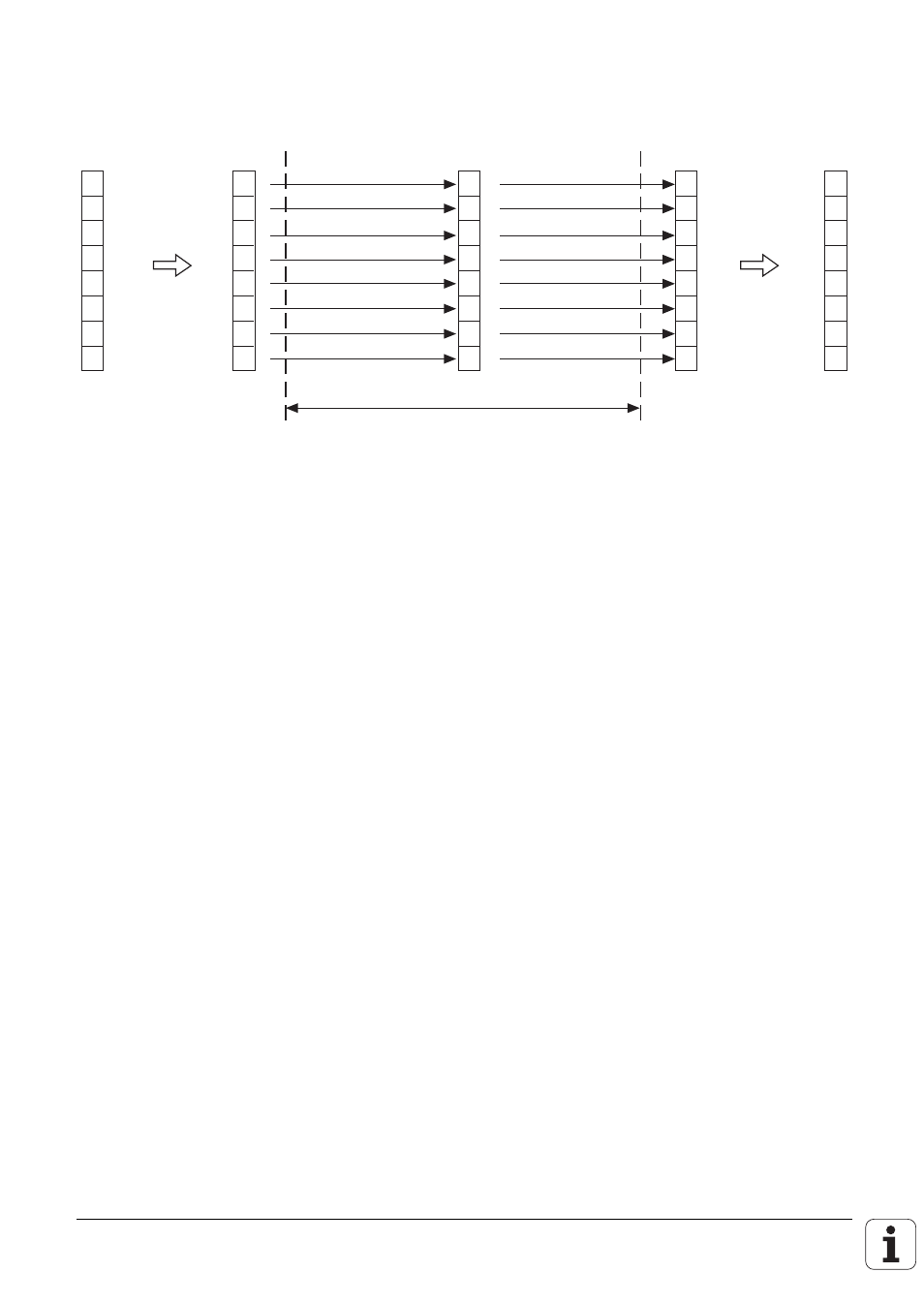2 asynchronous data format – HEIDENHAIN TNC 407 (243 020) Technical Manual User Manual
Page 652

Sender
Transmitter
Speicher
Memory
MSB
LSB
Übertragungsstrecke
Transmission path
Empfänger
Receiver
Schnittstellen-Puffer
Interface buffer
0
1
1
0
1
0
1
1
0
1
1
0
1
0
1
1
0
1
1
0
1
0
1
1
MSB
LSB
0
1
1
0
1
0
1
1
0
1
1
0
1
0
1
1
Speicher
Memory
Schnittstellen-Puffer
Interface buffer
One obvious advantage of serial data transmission becomes apparent when long distances have to
be covered. With parallel transmission, the cost of the cable increases with every additional bit
which has to be transmitted. In addition, the effect of interference on adjacent wires from sharp
signal edges and electrical coupling is far greater over long lines than it is with serial transmission
which is relatively slower and uses fewer wires.
The comparatively slow speed of serial data transmission is, at the same time, its greatest
drawback. Since the individual bits are sent along the line one after the other and each transfer takes
a specified time, it takes far longer to send a binary word to the receiver than it would if conveyed by
parallel transmission. As it happens, most peripheral devices work fairly slowly and cannot in fact
cope with data transmitted at high speed. Serial data transmission is generally adequate for devices
such as external memories or mechanical printers, especially as such devices have a large internal
buffer for incoming characters.
1.1.2 Asynchronous data format
In order for communication to be established between two devices involved in data interchange,
they have to use a common language.
In the field of computer engineering, this language consists of digital coding of letters, figures and
control characters.
One of the most common codes is the ASCII code (American Standard Code for Information
Interchange) which codes all characters with seven bits.
In all, it is possible to code 27 = 128 characters. According to the ASCII code, the control character
"Line Feed" or
0 0 0 1 0 1 0 = 10 dec = 0A hex
MSB
LSB
The letter 'z' is represented by the following combination of bits:
